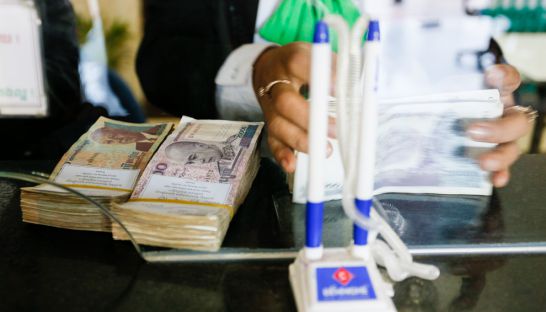More Cambodians struggling to repay MFI loans
More Cambodians struggling to repay MFI loans
Banking industry insiders expressed concern yesterday over a spike in the amount of delinquent debts reported by microfinance institutions (MFIs) across the Kingdom, which they attributed to farmers struggling to repay their loans after adverse weather conditions affected their crops.

Speaking at an industry workshop, Hout Ieng Tong, chairman of the Cambodia Microfinance Association (CMA), said with about $3 billion in micro loans outstanding, the ratio of delinquent loans has doubled since January. Total loan portfolio at risk (PAR) – the share of loans where payments are more than 30 days overdue – has risen to slightly over 1 per cent, from 0.5 per cent at the start of the year.
“Loans in the agricultural sector account for about 30 per cent of all lending in the microfinance industry, and this sector was seriously affected by drought in April and May,” he said, explaining that drought reduces farmers’ cash flow and makes it more difficult for them to make their loan payments.
Ieng Tong said while 1 per cent was still a relatively low PAR ratio compared to other countries, it requires attention.
“As this is a rising trend, we need to address it now to prevent any negative issues in the future,” he said.
The spike in delinquent loans has been accompanied by a worrying rise in cases of multiple loans, where customers borrow from more than one lender simultaneously, increasing the risk of default.
Prasac Microfinance, Cambodia’s largest MFI in terms of loans issued, reported a sharp climb in its usually low PAR, which rose to 0.7 per cent as of the end of June, from 0.3 per cent at the start of the year, with $864 million in loans outstanding.
Sim Senacheert, the MFI’s chief executive, admitted mistakes had been made that allowed some customers to take out loans from multiple institutions.
“Because of more competition in the market, multiple institutions are providing loans to the same customer, which can exceed the customer’s ability to repay his debts,” he said.
“Our staff was careless about this because until now loan performance has always been good.”
Chea Phalarin, chief executive officer of microlender Amret, said rising PAR ratios were a warning bell that the Kingdom’s microfinance sector could be headed for trouble.
“It’s a sign to show that there is risk in the sector,” he said. “If lenders continue to operate without due care and sufficient professionalism, it could lead to over-indebtedness.”
Sean Thornnin, an economics lecturer at Limkokwing University in Phnom Penh, said the rise in delinquent loans was a sign that the burden of debt on MFI customers was increasing, which would have social consequences. Unless contained, it could also affect the performance of MFIs.
He said with loan quality deteriorating, lenders would be more careful to evaluate the creditworthiness of their customers before offering loans. This could cool the country’s overheated credit growth, which grew at a staggering 41 per cent year-on-year during the first quarter of 2016.
“The lending growth rate could slow this year to between 20 and 30 per cent because of the quality of loans that we saw in the first half of the year,” Thornnin said.













